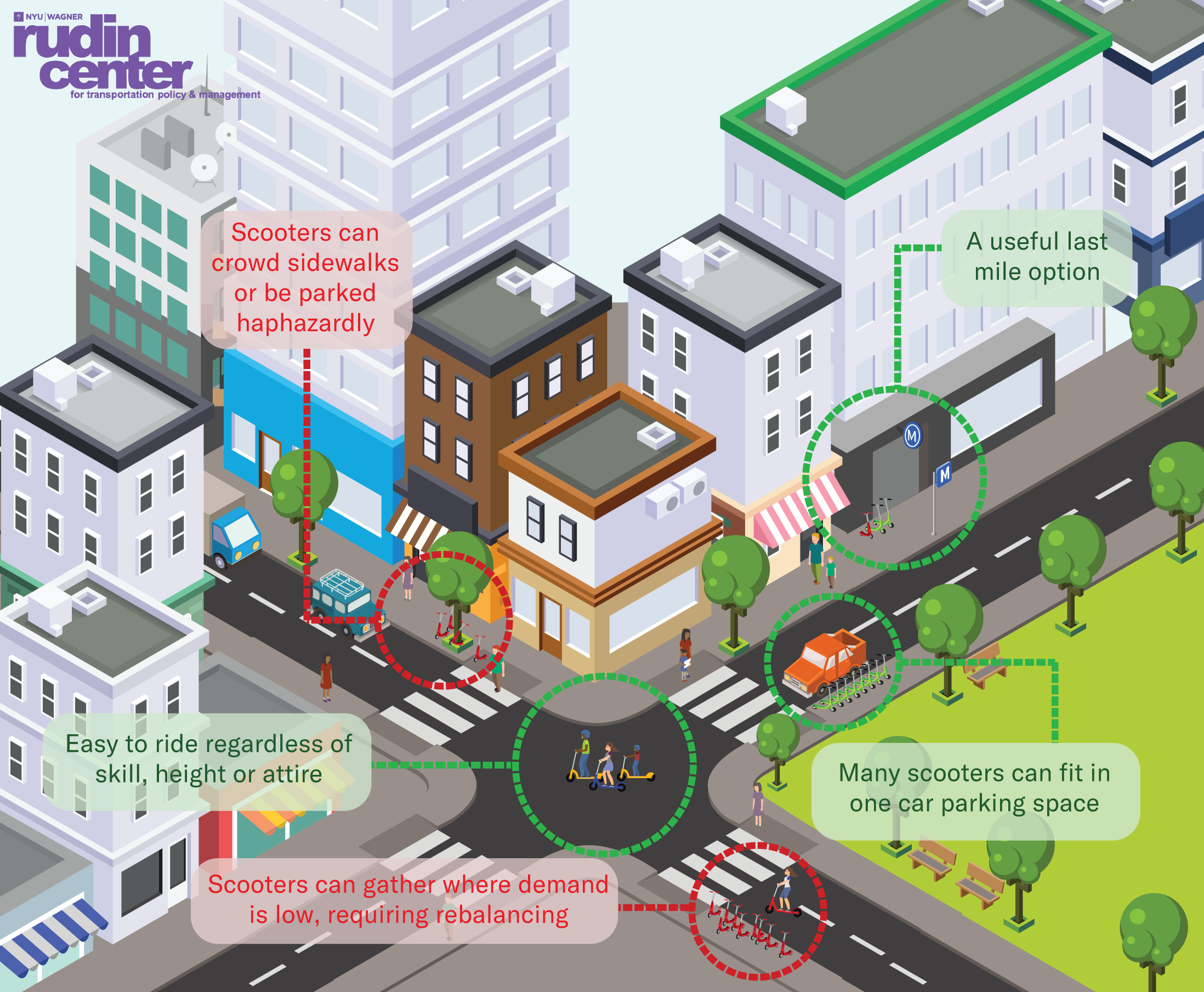The State of Scooter Sharing in United States Cities
Scooter sharing, the temporary rental of motorized standing kick scooters, emerged in the Fall of 2017 as a last mile and short-distance travel mode. In cities across the United States, thousands of scooters were deployed virtually overnight. Electric scooters quickly became popular with city residents.
The scooter’s appeal stems partially from the ubiquity of the children’s Razor Scooter in the early 2000s, when the millennial generation was growing up. The latest scooters are the next step in the micro-mobility revolution, following dockless bike shares.
The major e-scooter sharing companies, Bird, Lime and Spin, aim to provide a new mode of urban transit with a low barrier to entry. However, cities across the U.S. are struggling with how to regulate scooters. Requiring street space to operate and sidewalk space to park, scooters can interrupt the flow of, and even endanger, pedestrians, bikes and wheelchair users. In light of these challenges, city regulators must develop intelligent policies that balance the need for safety with the public desire for a new, efficient travel mode.
Graphic designed by Ari Kaputkin
